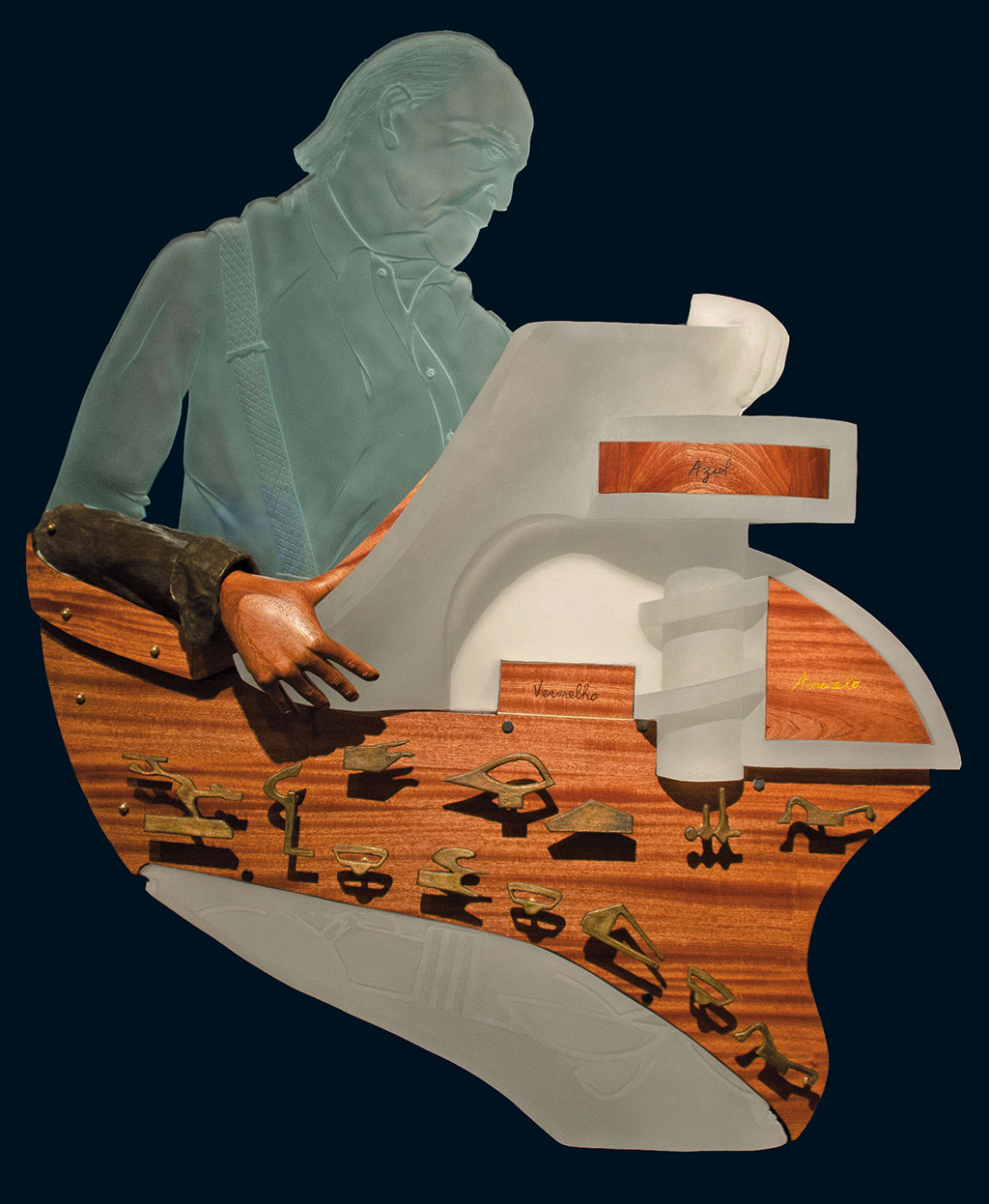To Swoop, Soar and Surprise (Oscar Neimeyer)
Materials Cast glass, sandblasted carved glass, bronze, and wood
Oscar Niemeyer, the Brazilian architect, produced a prestigious body of work over a career that spanned almost 80 years. His first international acclaim came in 1943 from the design of the Pampulha Architectural Complex that consisted of a church, a casino, restaurant, golf course, and yacht club.
In 1956 Niemeyer was invited to design the major civic buildings of the new capitol in the center of the country. Six buildings including the National Congress, the Cathedral, the cultural complex, and the Supreme Court were all completed before 1960. Over the years, in total, he designed 28 buildings in the capitol city. The last of which, the Brasilia Digital Television Tower, was completed in 2012. Some of his other well-known projects were the United Nations Headquarters in New York (in collaboration with Le Corbusier), The campus of the University of Haifa in Israel, Museum of Modern Art in Caracas, Venezuela, and the Brazil Pavilion at the 1939 New York World’s Fair (collaboration with Lùcio Costa. Later on, in the overall design for the city of Brasilia, Costa did the plan of the city and Niemeyer did the buildings.
My sculpture “To Swoop, soar, and Surprise” attempts to relate the philosophy of its subject. Niemeyer said,” Curves are the essence of my work because they are the essence of Brazil, pure and simple”. “What attracts me are free and sensual curves, the curves in my country’s mountains, in the sinuous flow of its rivers, and in the body of its beloved women”. He took inspiration in the female form and drew frequently from models incorporating aspects of these drawings into his buildings. To tell his story, I have used the white glass to represent the white reinforced concrete so prevalent in his sculptural buildings. Details of several buildings including Centro Niemeyer in Avilés, Spain, the National Congress, in Brasilia, the beautiful arching lines of the Cultural Complex. Neimeyer is inspecting his work and and in another context the profiles of 13 if his buildings as seen in the small bronzes at the center of the piece. These are from a typeface invented by two young Brazilian graphic designers based on the buildings of Oscar Niemeyer and called Utopia Niemeyer.
